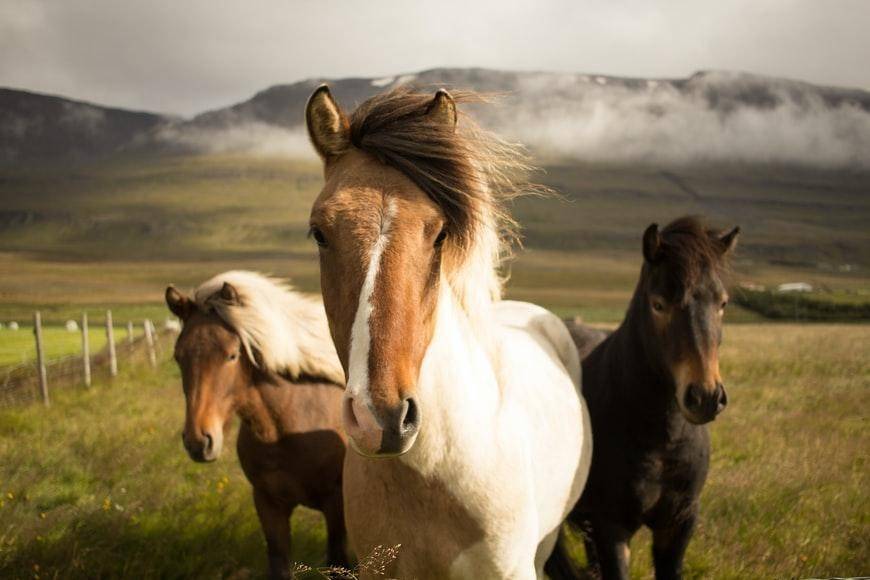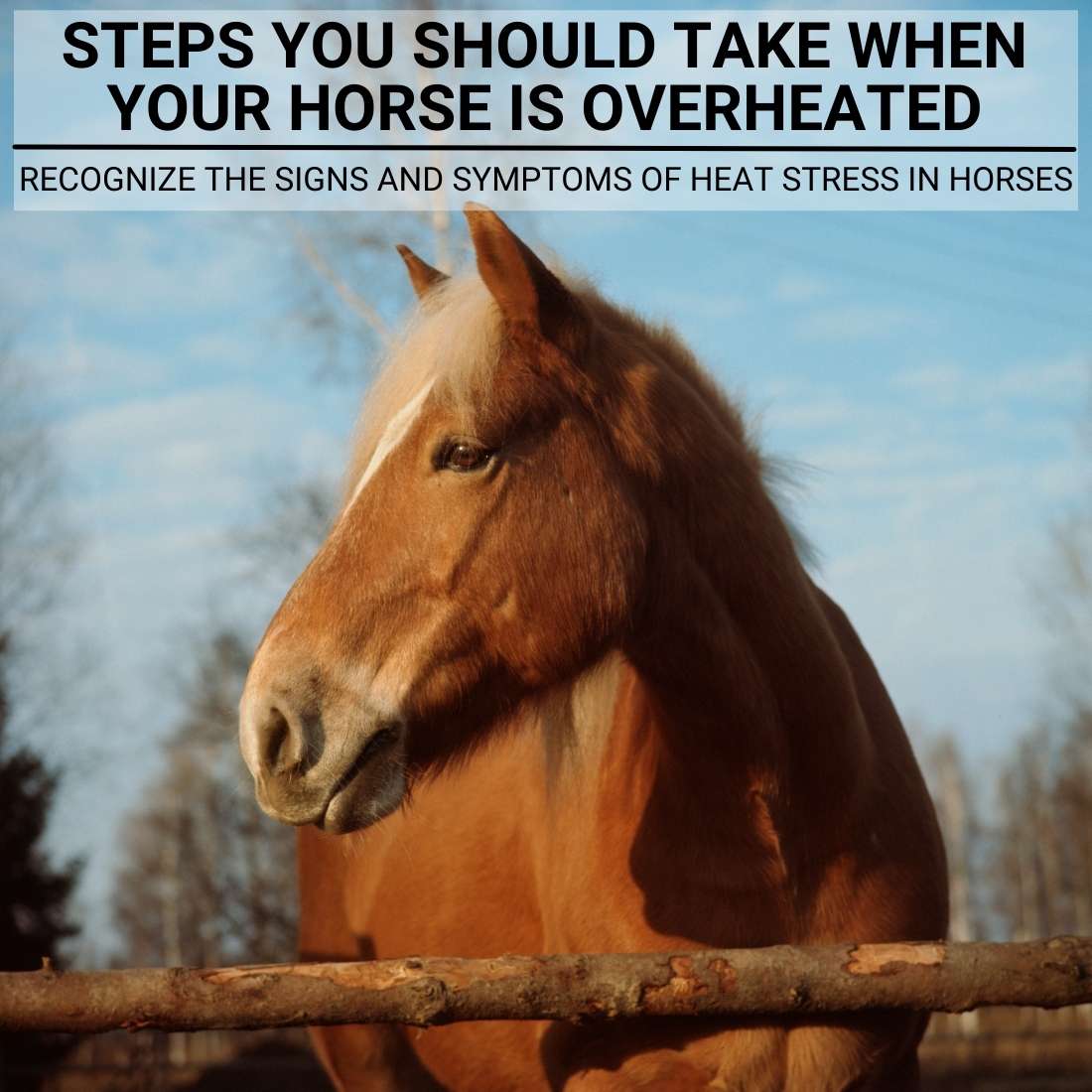The consequences of hot temperatures on our horse buddies may be devastating. While the temperature rises to 90 and 100 degrees, the horse’s health can swiftly deteriorate, particularly when they are active.
Table of Contents
Heat builds up while the horse engages in physical activities, and it needs to be released. In hot weather, keep an eye on the horse’s health and limit intense exercise to prevent heat stress, which can lead to heatstroke.
Horses could become overheated in hot temperatures. Heat stress and the risks of warm temperatures do not have to be taken lightly. Whenever a horse overheats, it can suffer from a variety of ailments such as heat exhaustion and heat stress.

What Exactly is Heat Stroke?
Extreme heat or high-intensity exercise that boosts heat generation by approximately 50% might cause the horse’s body to be flushed. If this happens, it will affect their respiratory, circulatory, neurological, and muscle function.
To prevent these functions from failing, a horse’s internal temperature must be lowered, and spent fluids must be replenished. Heatstroke can happen to exercise and non-exercising horses due to the high temperature and humidity. You may get a cob size bridle for your horse if you want to keep it moving so it doesn’t overheat.
Symptoms of Overheating and Heat Stroke in a Horse
Dehydration or overheating may lead to heatstroke, which develops quickly. Therefore, it’s critical to recognize the signs and symptoms of overheating so you can help your horse once its health starts deteriorating. Some of the signs and symptoms are as follows:
- Sweating profusely.
- Heart rate has risen.
- Breathing quickly.
- Dehydration.
- They’re exhausted.
- A fever of greater than 104 degrees in the rectal area.
- The eyes seem droopy, and the expression on the face looks dreary.
- Urination complications.
- Suffering from seizures and collapsing.
The following indicators might arise if the horse’s health worsens and it experiences heatstroke:
- A fever of more than 106 degrees.
- The skin is dry and heated.
- Symptoms of the nervous system problem.
- Weaving and stumbling over.
- They’ve fallen and are having a hard time getting back up.
- They are not conscious of their environment.
- Failure of the kidneys or the liver.
- Stomachache.
- Inflammation of the lungs.
- Respiratory problems develop suddenly.
- Spasms.
- Coma.
The horse proceeds to sweat abundantly, and its body temperature is raised, and it may stay that way long after it has already slept, even though its skin typically feels cold.
Heatstroke is a considerably more dangerous condition in which the horse’s skin becomes hot and dry, respiration becomes exceedingly quick, and the horse’s core temperature increases to 106-110 ℉. Heatstroke can cause horses to collapse, convulse, and even die if left untreated.
Some Common Queries Regarding Overheating in Horses
Horses generate a lot of heat, mainly through food breakdown and muscle activity throughout the movement. When the ambient temperature is lower than the horse’s normal temperature, blood is pushed to the surface, where the body may readily expel the heat.
When the ambient temperature is higher than the horse’s normal temperature, blood redirecting is insufficient, and sweating will become the horse’s major cooling method. Apart from humans, the horse would be the only animal that cools itself largely by sweating. It saturates the body, allowing for cooling through evaporation.
When sweating does not drain, and appropriate cooling isn’t possible in hot, humid conditions, problems arise, and thus the cooling system collapses. Heat stress develops, as a result, leading to overheating, even life-threatening heatstroke.
Things to Do When Your Horse is Overheated
When a horse gets overheated, an owner really shouldn’t try to distinguish between two different conditions and should instead:
- Stop riding the horse, put it in the shelter, and contact a vet right away as the problem might swiftly escalate.
- If there isn’t wind, use a fan to produce air circulation.
- Soak the horse’s whole body, along with the head, using cool water, commencing with both the feet and legs.
- Coldwater should never be used, as well as cold-water treatment should never be attempted.
- Little volumes of drinkable water can be provided until the vet comes through short intervals.
If your horse suffers from overheating or heat stroke, it’s critical to diagnose the problem early and begin vigorous treatment right away. Even if the symptoms are minor at first, you should transfer the horse to a shaded spot and blast a fan on it.
Once they’re in a better situation, apply cool water to their head and body with a sponge or sprayer, concentrating on the major veins in their neck and the light areas of their crotch. To aid it to cool completely, rubbing alcohol could be applied to their neck and back. After the horse has stabilized, you can give it modest amounts of chilled water.
If the horse refuses to drink or is thirsty, IV fluids must be given to replenish lost fluid and restore fluids and electrolytes.
Some Other Necessary Steps You Should Be Taking
The usage of antipyretic and anti-inflammatory medications is a point of contention. While all these medications can prevent the horse from heat shock, proteins and ease discomfort, they might not even be able to assist a horse suffering overheating or heat stroke, decreasing the temperature of the body.
A horse will typically get at minimum one dosage. Horses who are anxious and exhibiting neurological signs might benefit from sedatives. If the horse develops extreme overheating and is exhibiting rapidly worsening neurologic signs, glucocorticoids must be injected intravenously to avoid shock and body system failure. The horse’s signs will determine any further alternative therapies.
Horses in Hazard of Extreme Heat
Heat exhaustion affects certain horses more than others:
- Horses that aren’t in good shape.
- Horses that are obese
- Horses in their peak years.
- When the temperature exceeds 100 degrees F, horses are exposed to direct sun.
- Animals in stables or trailers that are overheated and inadequately ventilated are constantly at risk.
- Horses who don’t drink sufficient water or even get adequate sodium or electrolyte solutions.
- Horses brought in from cooler regions haven’t had time to acclimate to the heat.
The Impact of Feed on Heat Stress
Protein-rich diets cause horses to produce extra heat during metabolism, making them more sensitive to overheating.
It is critical to avoid physical activity for the horse, particularly close to mealtime, since they create a lot of body heat consuming, digesting, and metabolizing the food. When the heat created by meal digestion is combined with the heat produced by activity, they may experience heat stress. Give horses food three to four hours before exercising them, and then probably have to wait two hours after they’ve been worked before nourishing them again.
Dehydration
Heat fatigue is characterized by dehydration. Dehydration occurs when a horse loses water via sweating rapidly to cool down. One can tell whether the horse is parched by using a basic “pinch” check. Pinch and loosen a tiny bit of skin on the horse’s neck or shoulders. The horse is safe if the skin springs back into position. Your horse may be dehydrated when the skin doesn’t bounce back readily.
More than almost any other element, dehydration directly and immediately influences a horse’s health. To put things in context, the system can handle losing nearly most of its lipids and more than 50% of its protein levels, yet losing just a tenth of its water can have catastrophic implications.
The amount of heat that the horse needs to remove to operate rises with exercise. The cooling effect is the primary method by which horses reduce heat burden. Evaporative cooling is also aided by air circulation. Extreme humidity reduces evaporative efficiency significantly affecting the cooling down process.
Check their Gums
A delayed capillary refilling time and a loss of skin suppleness are also indicators of dehydration. To estimate the capillary refilling time, push your fingertips against the horse’s gums, next withdraw it and see how long it would take for the color to reappear. The time it takes for a capillary to fill is usually 1.5 to 2 seconds.
Keep an eye on the horse’s water levels. Find their typical body temperature, pulse, and breathing rate. Keep in mind that every horse is unique.
Overheating is Treatable
The severity of its disease will determine the outlook for a horse. In terms of giving a horse the best result, one should follow their veterinarian’s advice. The vet will most likely request blood tests to see whether they have any liver or renal issues. This may require multiple testing over time as well.
It is critical for a horse suffering from heat stroke to obtain lots of rest, with no exercise for at least 3 to 5 days. If your horse has already suffered from overheating or heat stroke, it is more prone to do so again; thus, it must be closely monitored when exercising or remaining in a confined place in hot weather.

